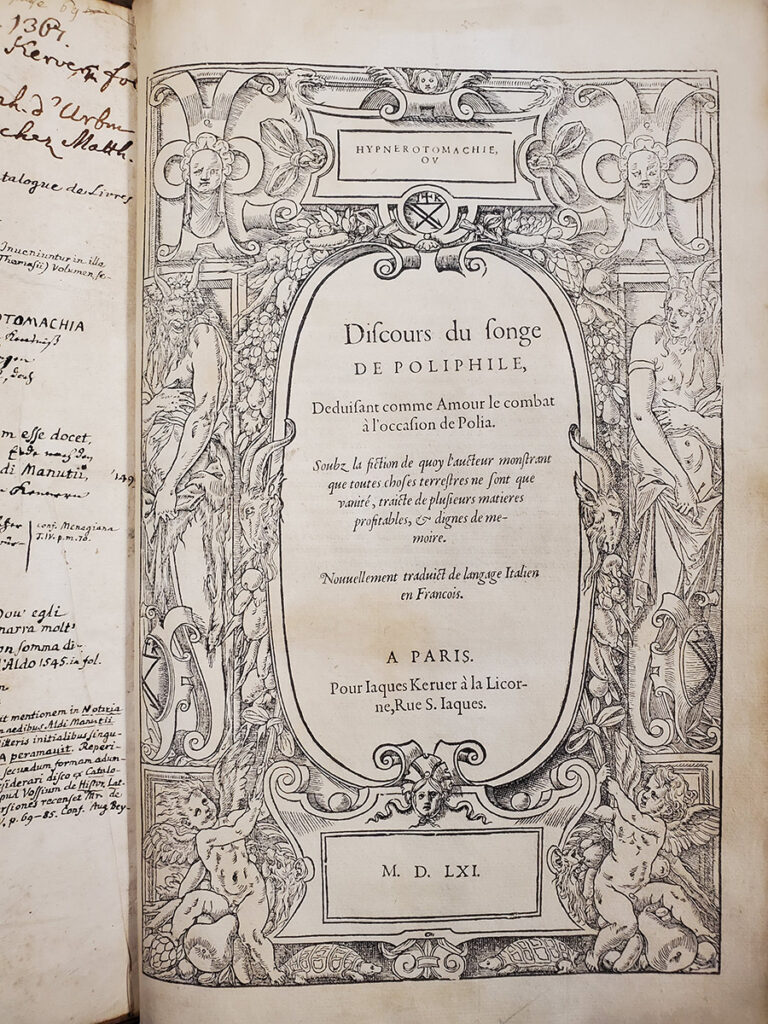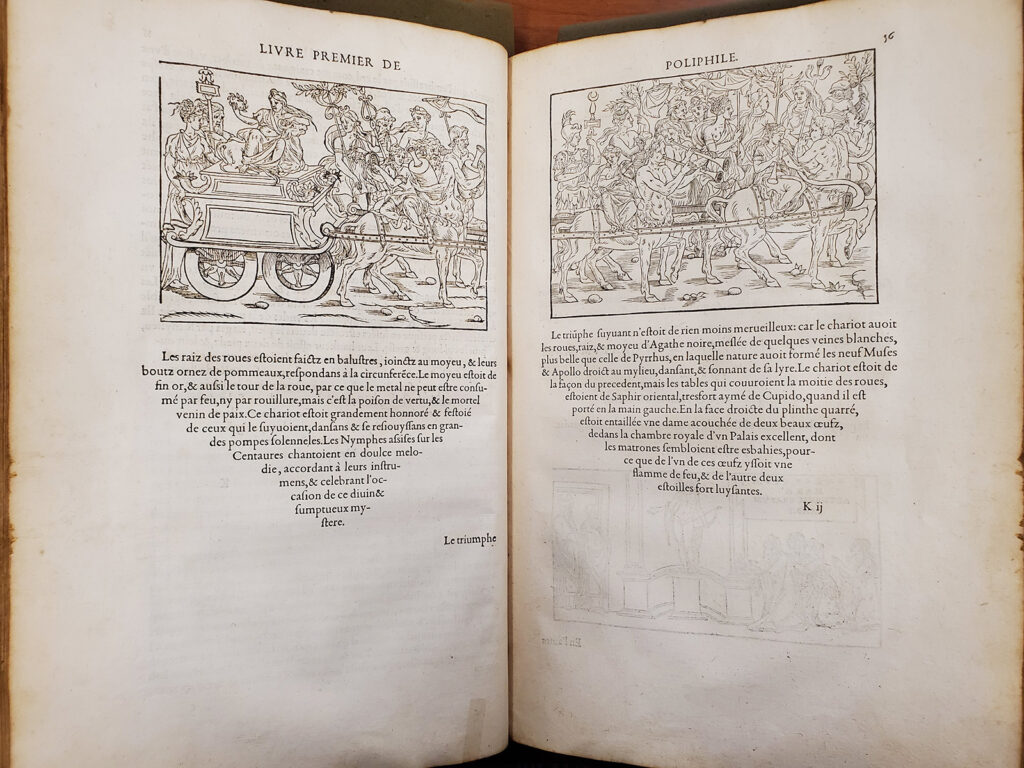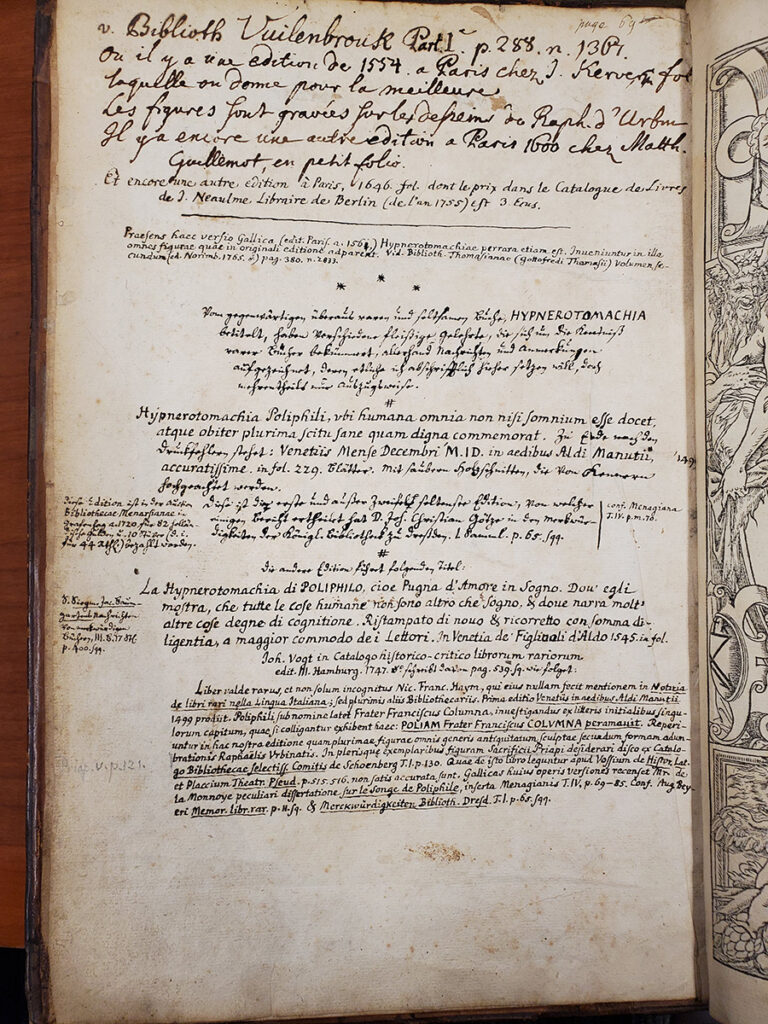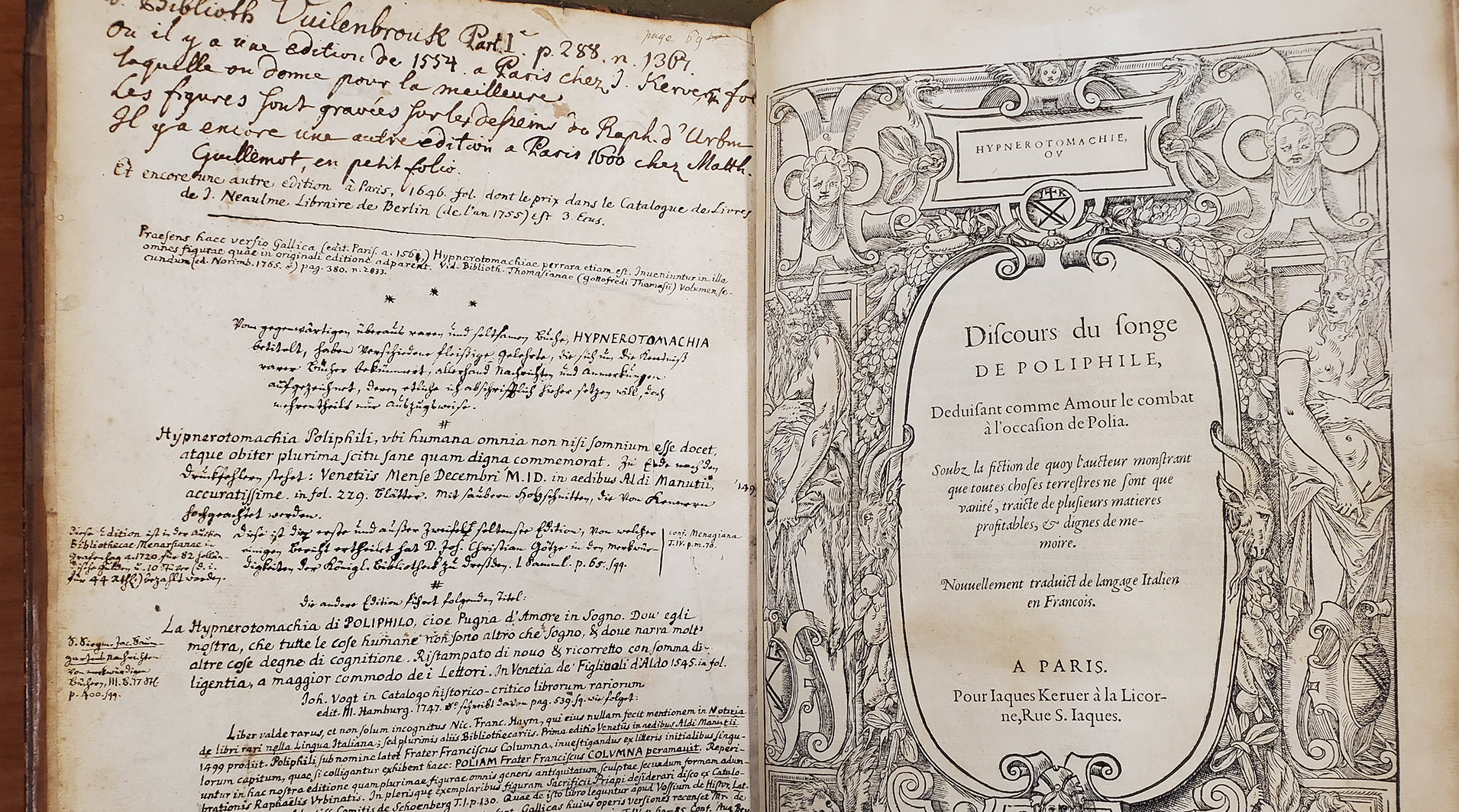
The Libraries Acquire a Rare Book of the French and Italian Renaissance
The Julian Edison Department of Special Collections recently acquired a copy of Hypnerotomachie, ov Discours du songe de Poliphile, printed in Paris in 1561. The book was purchased in collaboration with Walter Schlect, interim Romance languages & literatures librarian and Julie Singer, chair of the Department of Romance Languages and Literatures, with funding from the Isidore and Edith Silver Washington University Fellowship Fund, which supports University Libraries purchases concerning the French Renaissance of the sixteenth century.
The book was originally printed in Italian by Aldus Manutius in 1499, and is considered to be one of the most beautiful books printed before 1500 as well as one of the most engaging and enigmatic masterpieces of Renaissance art and literature. The Hypnerotomachie acquired by the library is the third French edition, which retains the beauty of the first edition both in illustration and design, with the original text translated into French.
Hypnerotomachie, known in English as Strife of Love in a Dream, is an allegorical fantasy in which the main character Poliphilo pursues his love Polia in his dreams. The narrative follows the conventions of courtly love but also draws from Renaissance Humanism in which arcane writings are a demonstration of classical thought. Throughout the dreamscape, Poliphilo encounters mythical creatures and a variety of classical architecture, which are showcased through woodcut illustrations.
Printing and Illustration
In this lavishly illustrated book, the text and illustrations are closely connected, with a perfect balance between woodcut and text. Text often flows around images and images occasionally serve as text. The text beautifully tapers to a point, which is difficult to produce symmetry with individual letters in metal type. The woodcut illustrations depict scenery, architectural settings, and some of the characters Poliphilo encounters in his dreams.
The book includes 181 woodcut illustrations, thirteen of them full pages. The illustrations are chiefly adapted from the 1499 Aldine edition, with fourteen additional woodcuts of topiaries, gardens, and architectural elements designed specifically for the French editions. This masterpiece of printing and illustration complements the Isador Mendle Memorial Collection on the history of printing and strong holdings in the history of illustration.
Provenance
Our copy features extensive handwritten notes on the front endpaper. In addition to some signatures from former owners, there are numerous bibliographical notes in French, Latin, German, and Italian. Several appear to be in the hand of Paul Christ Gottlieb, castle librarian at Ansbach, Germany (the library at Ansbach acquired the book in 1759). The notes mention alternate editions of the work, record auction catalogs and sale prices, cite bibliographies, and explain the acrostic revealing the author’s name (discussed below). The final note, by Gottlieb, mentions the frequently missing illustration of “The sacrifice of Priapus.”
These notes not only tell the story of our individual copy—the references to other editions point to the significance of the text since its original publication in 1499.
Censorship
As noted by castle librarian Gottlieb, many copies of the book have been censored due to erotic content in the woodcut illustrations and text. “The sacrifice of Priapus” is a full-page woodcut illustration and is often torn, removed from the book, or covered with ink. The illustration features Priapus, a minor Greek god of fruit, vegetables, fertility, and male genitalia. The lack of censorship of this illustration is significant enough to warrant a note from Gottlieb on the pastedown. Page 69 (which features Priapus) and page 121, which features another woodcut with a phallus, have penciled marginal notes in Latin (not by Gottlieb), stating that these illustrations are missing from many copies of this work.
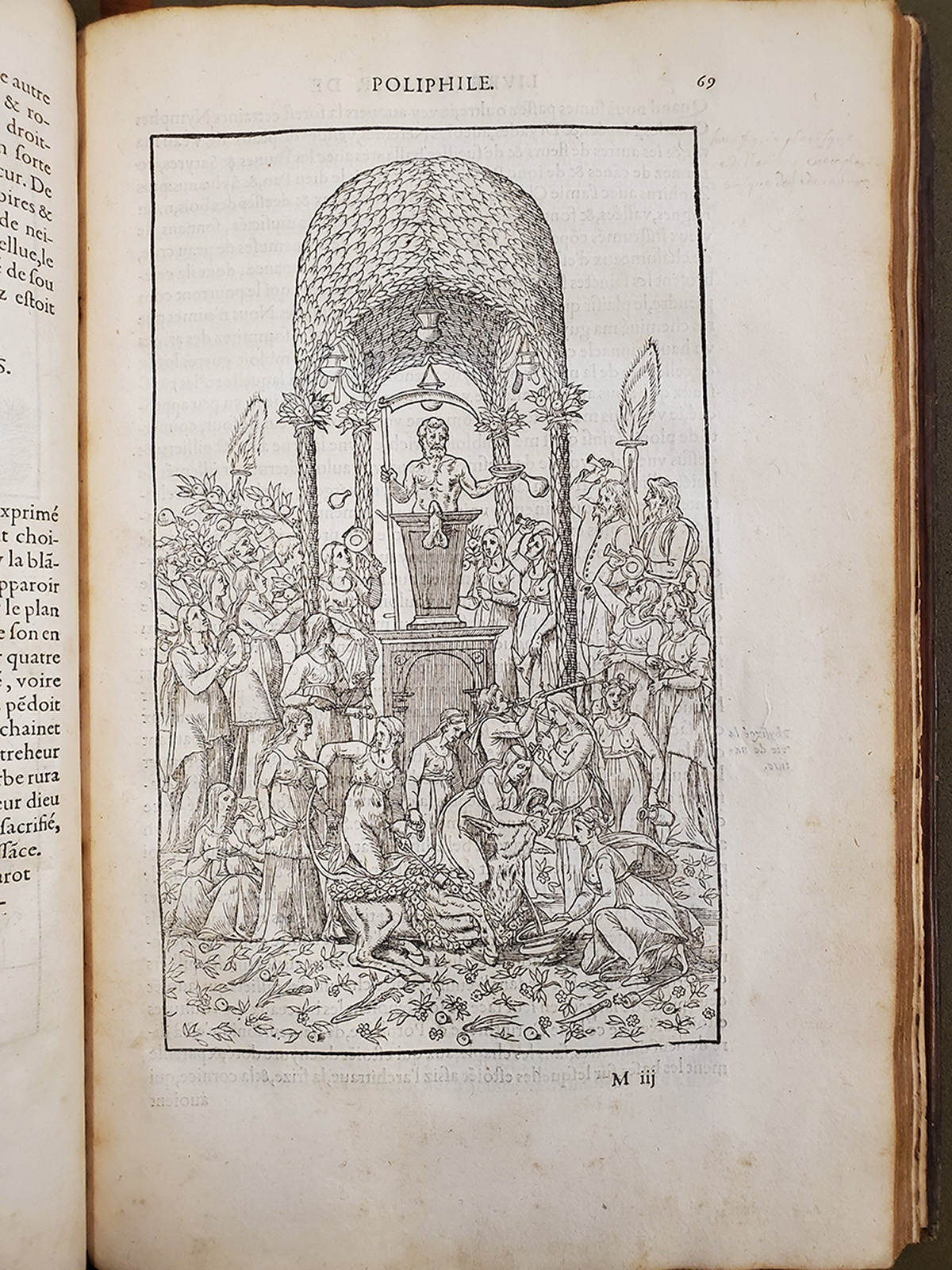
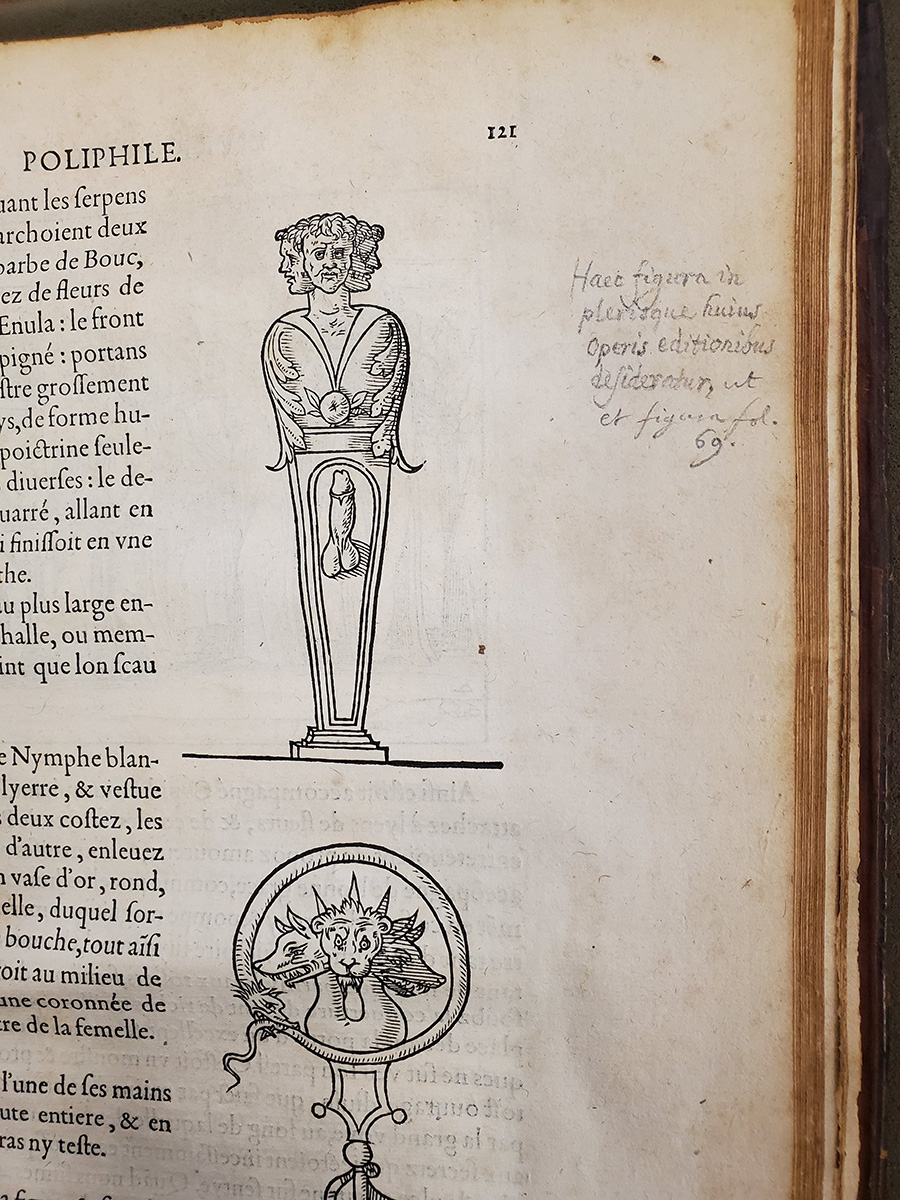
Code Breaking and Conspiracies
The book was originally published anonymously. However, the first letter of each chapter in the 1499 Italian edition forms an acrostic that translates to “Brother Francesco Colonna has dearly loved Polia.” Though the authorship is occasionally contested, it is widely accepted that Francesco Colonna wrote the book. The author’s name hidden in this way creates a connection to the Arnold Collection, which includes code breaking and hidden messages.
Due to the somewhat labyrinthine plot, multiple dream sequences, and the idiosyncratic language that combines Latin, Greek, Hebrew, and hieroglyphs, some critics have claimed the work is unreadable. Others have claimed that the complicated text and illustrations contain more mysteries to decode.
The Hypnerotomachie is available for research in Special Collections. For more information, please contact the Curator of the Rare Book Collections Cassie Brand.
